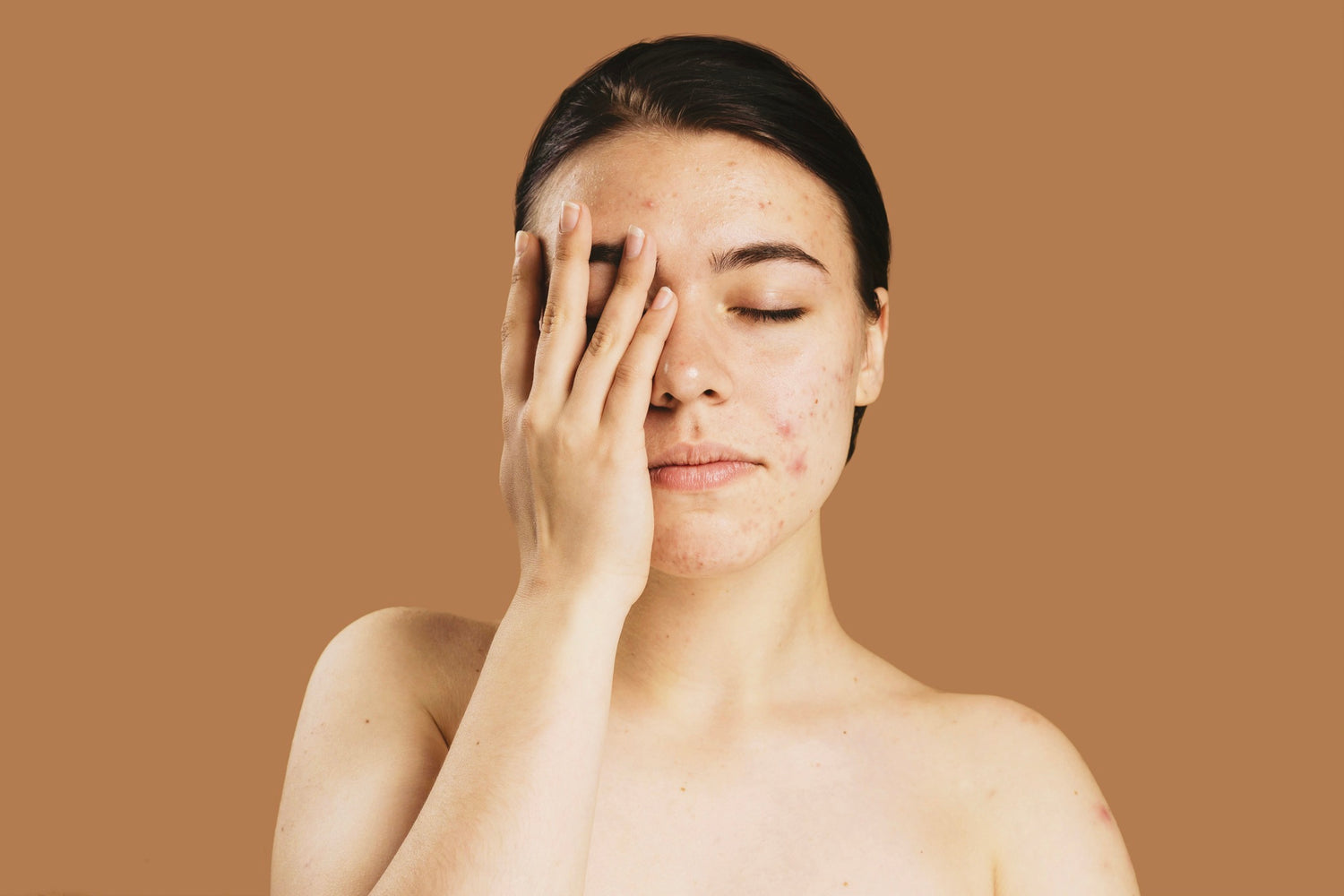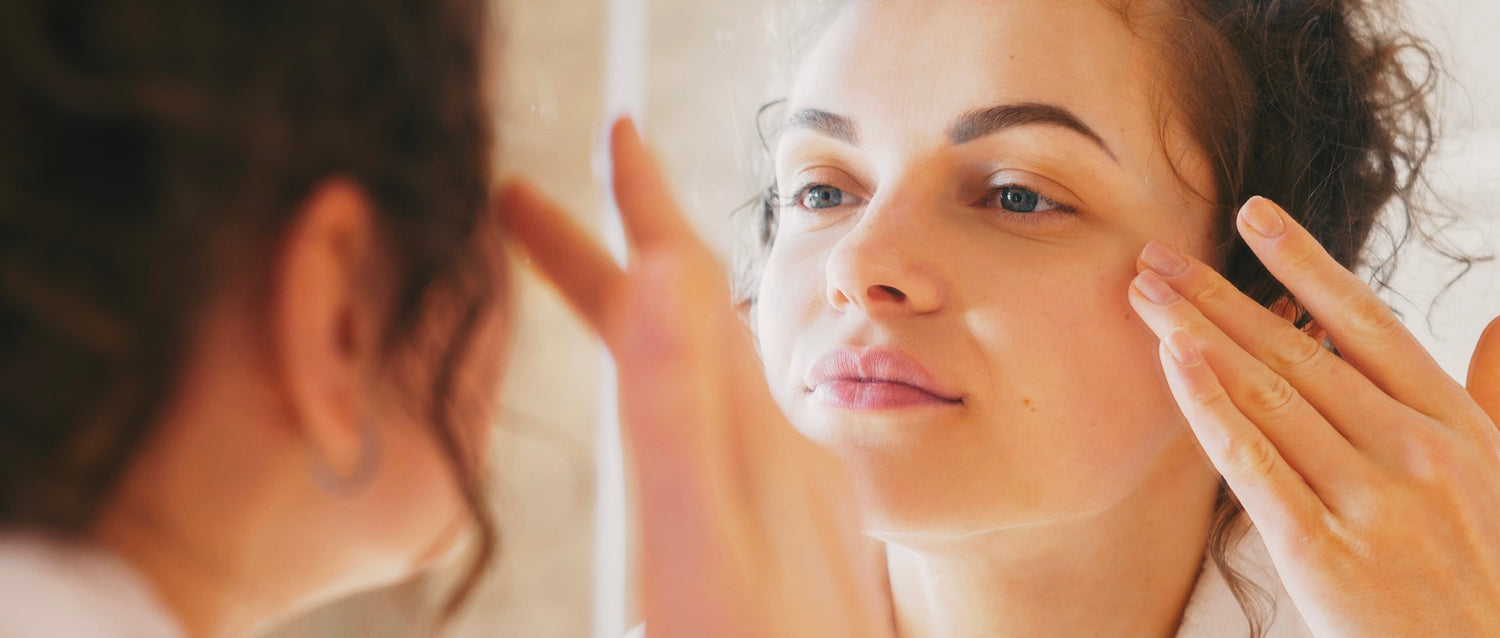clarify skin conditions
Acne-prone skin is marked by enlarged pores and an oily sheen, stemming from overactive sebaceous glands that produce an abundance of sebum. This excess oil tends to trap dirt, makeup residue, and dead skin cells, leading to clogged pores—a primary factor behind acne outbreaks, blackheads and a variety of acne lesions. Acne can often be exacerbated by internal triggers like hormonal imbalances, common in teenagers, stress, and poor diet, compounded by inadequate skin care usage.
To mitigate acne flare-ups, it's crucial to avoid facial steaming and heat treatments, as they can further stimulate sebum production, aggravating the condition. Effective management of acne-prone skin involves adopting a skincare routine that avoids harsh cleansers and scrubs, which can strip the skin of its natural oils, disrupt its pH balance, and compromise the protective acid mantle. Moreover, it's important to steer clear of heavy, oil-based skincare products containing pore-clogging ingredients like lanolin and mineral oil.
Characteristics of Acne Prone Skin:
Frequent Breakouts
Regular occurrence of pimples, blackheads and/or whiteheads
Excess Oiliness
The skin often looks and feels greasy, especially in the T-zone (forehead, nose, and chin).
Enlarged Pores
Pores appear larger, especially in areas where oil production is high.
Redness and Inflammation
Active acne lesions may be surrounded by areas of red, inflamed skin.
Post-inflammatory Hyperpigmentation
Dark spots or patches that remain after an acne lesion has healed.
Others
Scarring: Past breakouts may have left indented or raised scars on the skin.
Sensitive Reaction: Skin may react adversely to certain products or ingredients, leading to increased breakouts or irritation.
Uneven Skin Texture: Due to recurrent breakouts and varying stages of healing acne lesions.
Presence of Cysts or Nodules: More severe forms of acne feature large, painful lumps beneath the surface of the skin.
Frequent Flare-ups: Triggered by factors like hormonal changes, stress, certain foods, or product ingredients.





Top 3 In Clinic Treatments for Acne Prone Skin Concern
Good to Know
-
Excess Sebum Production
Overactive sebaceous glands produce an excess of oil, which can clog pores and foster the growth of acne-causing bacteria.
-
Bacteria
The bacteria “Propionibacterium” thrives in clogged pores, leading to inflamed acne lesions.
-
Dead Skin Cell Buildup
Accumulation of dead skin cells on the skin's surface can block pores, trapping oil and bacteria inside. Lack of oxygen then leads to bacteria and ultimately an acne pustule.
Hormonal Imbalances
Fluctuations in hormones, especially androgens, can stimulate the sebaceous glands to produce excess sebum, leading to acne. As can conditions such as polycystic ovary syndrome (PCOS), hormonal changes, puberty, pregnancy, and menstruation.
Genetics
Acne can be inherited. If your parents had acne, there's a higher likelihood that you might experience it as well.
Diet and Gut Health
Certain foods, especially those with a high oil or dairy content, might aggravate acne in some people. Studies have shown that an imbalance in gut flora has a major influence on skin health and is a factor in triggering acne outbreaks.



All you need to know about how to manage your acne prone skin condition.
The results of any skincare regime largely depend on what the underlying issue is, whether it stems from poor skincare, regime, hormonal shifts or dietary patterns. It is vital to maintain consistency and patience with any new skincare regime. Don’t worry if the skin experiences a temporary "purging" phase, when the accumulated debris and bacteria in the pores work their way out, any issues will soon pass.
If hormones are the root cause of your acne, solely relying on skincare and treatments might not suffice. In such cases, consultation with a dermatologist or endocrinologist is advised.
Skincare Regime
If you are following the Clarify range’s recommended protocols you will see noticeable changes within 4 to 6 weeks. This is due to the average lifecycle of a skin cell, which needs this time for the product to deploy its effects and for the old cells to be replaced with newer, healthier ones.
Professional Facials
If you have the recommended facials for this skin concern, and a tailored home care regime, you will prevent future outbreaks and have dramatic results in a short time. After a few sessions, along with time and patience for the skin to purge out impurities, balance sebum production, and reduce bacterial presence.
Hormonal imbalances
Birth control pills, particularly those with estrogen and progesterone, can temper hormonal surges, controlling acne-triggering sebum overproduction. After pregnancy, as hormone levels gradually recalibrate, many notice a marked reduction in acne. However, managing hormone-induced breakouts can be a prolonged journey.
Best Ingredients for Acne Prone Skin Concerns
FAQ
What triggers my acne flare-ups?
Acne flare-ups can be attributed to an excess of sebum, combined with trapped dead skin cells and bacteria. These flare-ups can be triggered by hormonal shifts during adolescence or menopause, specific dietary choices, stress and some medications.
Which skincare products are best to curb my acne?
Opt for acne-targeted products that regulate sebum, cleanse pores, and foster an anti-bacterial skin environment. Steer clear of solutions that excessively dry the skin, disrupt its protective acid mantle, or lower its pH. It's also crucial to avoid ingredients known to clog pores, such as mineral oil and lanolin.
How can I adapt my homecare routine to prevent acne spread?
Steer clear of environments that induce sweating, maintain your hair off your face, resist the urge to touch or pop pimples, and rotate your towels and pillowcases frequently. Hydration is key, so drink ample water, and consider cutting back on greasy foods and carbonated beverages.
Which facial is effective for managing my acne breakouts and why?
For managing acne breakouts, we recommend the Clarify Peel with salicylic acid. When paired with high-frequency treatments and blue-light LED therapy, these treatments effectively purify pores and establish a bacteria-resistant environment, hindering the spread of acne.
Do you recommend a medical grade peel for acne?
Medical-grade peels, especially those with high concentrations of salicylic acid, TCA, or phenol, might offer impressive short-term results for acne. However, the aftermath can often result in excessive dryness and skin sensitivity, leaving it vulnerable to environmental damage and pigmentation issues. In our view, the potential long-term consequences outweigh the temporary benefits these peels provide.
What facial should I not have if I am prone to breakouts?
If you're experiencing acne flare-ups, it's advisable to avoid treatments such as dermabrasion, microneedling and extractions as they can aggravate and spread the acne. Additionally, facials involving steam and massage should be sidestepped since they can overstimulate the sebaceous glands, enlarge pores and further aggravate the issue.

- Regular price
-
£27.00 - Regular price
-
- Sale price
-
£27.00
- Regular price
-
£35.00 - Regular price
-
- Sale price
-
£35.00
- Regular price
-
£31.00 - Regular price
-
- Sale price
-
£31.00
- Regular price
-
£37.00 - Regular price
-
- Sale price
-
£37.00
- Regular price
-
£43.00 - Regular price
-
- Sale price
-
£43.00
- Regular price
-
£40.00 - Regular price
-
- Sale price
-
£40.00










